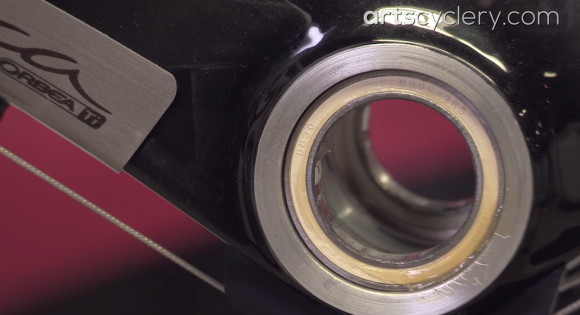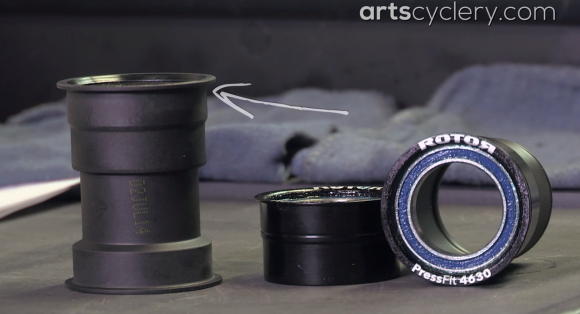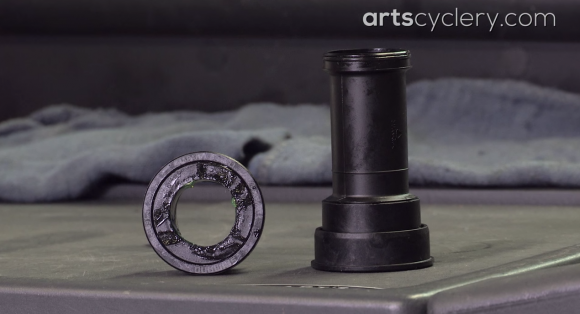Pros and Cons of Different Bottom Bracket Standards:
Let’s look at the challenges that the english bottom bracket faced, since it is this design most new bottom brackets hope to improve upon. It was not uncommon to have to chase threads of an english bottom bracket shell and then face the shell to remove any excess paint, to ensure that the faces were square.

BB30 Bottom Bracket
BB30 has largely gone away. This standard, used bearings that were directly pressed into the frame and rested against a clip fitted not internal grooves in the bottom bracket shell. The clips were weak and they creaked.

PF30 Bottom Bracket
PF30 is an improvement on BB30, that uses a flange cup for the bearing to sit in. That cup is then pressed into the frame. The cup helps to keep the bearing in place while preventing unwanted movement. The downside is that the aluminum cranks spindle sits right on the steel inner bearing race, which causes spindle wear and leads to creaking.
Bright is very similar to PF30 and uses the same bearings and cups, they are just spaced further apart. It never really caught on in the industry and suffers several of the same issued PF30 does.

BB86 and BB92 Bottom Bracket Style
BB86 and BB92 are the smaller diameter and wider spaced preset standard. These tend to work better than PF30 though they tend to function in the same way.
The real solution to bottom brackets is the industry maintaining tighter tolerances.